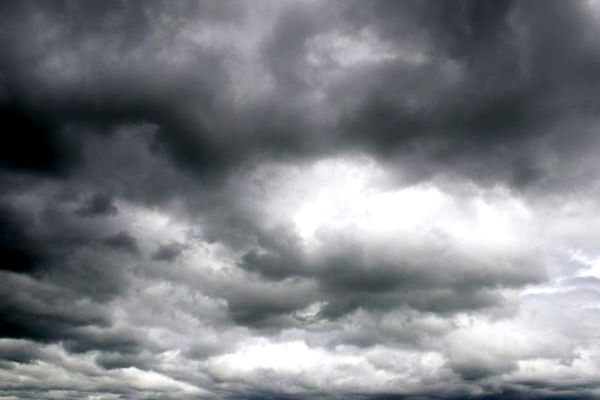 The New York City Emergency Management Department alerts New Yorkers of the potential for severe weather this evening. According to the later National Weather Service forecast, strong to severe thunderstorms are possible this afternoon into the evening and could bring brief heavy downpours, hail, and the potential for damaging winds to the city. The heaviest period of rain and thunderstorms is expected between 5 p.m. and 8 p.m. There is a slight chance of isolated tornadoes.
The New York City Emergency Management Department alerts New Yorkers of the potential for severe weather this evening. According to the later National Weather Service forecast, strong to severe thunderstorms are possible this afternoon into the evening and could bring brief heavy downpours, hail, and the potential for damaging winds to the city. The heaviest period of rain and thunderstorms is expected between 5 p.m. and 8 p.m. There is a slight chance of isolated tornadoes.
“The increased potential for severe thunderstorms may create dangerous travel conditions this evening,” NYC Emergency Management Commissioner Joseph Esposito said. “New Yorkers should stay inside during periods of severe weather. If you are outside during a thunderstorm, avoid open areas and immediately seek shelter indoors.”
A total of a half an inch of rain is forecast, but locally higher amounts are possible. Nuisance flooding may occur in low-lying and poor drainage areas. Flash flooding cannot be ruled out during the periods of heaviest rain. During a thunderstorm, NYC Emergency Management urges New Yorkers to remain indoors. To stay safe during a storm, New Yorkers should follow the safety tips below.
NYC Emergency Management will continue to work closely with National Weather Service and key city agencies to monitor and coordinate preparations for this evening’s severe weather. NYC Emergency Management has also activated the Downed Tree Task Force, a multiagency task force responsible for coordinating the response to a large downed tree event.
If you are caught outside:
- Stay away from tall, isolated trees and other tall objects.
- Avoid open areas like fields or parking lots.
- Stay away from water and wet items.
- An automobile can protect you from a lightning strike because the current will flow through the car’s metal frame. If you are in a car, do not touch any exposed metal connected to the car.
- If someone is struck by lightning, call 9-1-1.
- Do not walk or drive through flooded streets; the actual depth of the water may not be apparent. Turn around, don’t drown!
- Floodwater can be contaminated. Avoid contact with sewer water, as it poses a serious health risk.
- Have heightened awareness of cars, particularly when approaching or crossing intersections.
- Never touch or go near downed power lines, even if you think they are safe.
- Report any downed power lines and avoid standing in floodwater, as it can carry electrical current.
If you are indoors:
- Wait 30 minutes after the last clap of thunder before venturing back outside.
- Charge cell phone batteries, gather supplies, and turn refrigerators and freezers to a colder setting.
- If you are affected by an outage, turn off all appliances and keep refrigerator and freezer doors closed to prevent food spoilage.
- Do not use generators indoors. If you lose power and have a disability or access needs, or use Life Sustaining Equipment (LSE) and need immediate assistance, please dial 9-1-1.
What to Do if a Tornado Strikes
- Go to your basement or the lowest point of your residence. If an underground shelter is not available, move to a small interior room or hallway on the lowest floor and get under a sturdy piece of furniture. Put as many walls as possible between you and the outside.
- Stay away from windows.
- Avoid places with wide-span roofs, such as auditoriums, cafeterias, large hallways, or shopping malls.
- If you are outside, seek shelter inside a sturdy building immediately if a tornado is approaching.
- Being in a vehicle during a tornado is not safe. The best course of action is to drive to the closest shelter or building. If you are unable to make it to a safe building, do not try to outrun a tornado in your vehicle. Either get down in your vehicle and cover your head with your hands, or abandon your vehicle and seek shelter in a low-lying area such as a ditch. Do NOT take cover under an overpass or bridge.
- Be aware of flying debris.
Stay tuned to your local radio and television stations for the latest storm information.
For more safety tips, visit NYC.gov/EmergencyManagement. New Yorkers are also encouraged to download the Notify NYC mobile application, which is available for free download from iTunes or Google Play. Notify NYC is the City’s free emergency notification system. Through Notify NYC, New Yorkers can also receive phone calls, text messages, and/or email alerts about weather conditions and other emergencies. To learn more about the Notify NYC program or to sign up, visit NYC.gov/NotifyNYC or call 311. You can also follow @NotifyNYC on Twitter.
Become a Harlem Insider!
By submitting this form, you are consenting to receive marketing emails from: Harlem World Magazine, 2521 1/2 west 42nd street, Los Angeles, CA, 90008, https://www.harlemworldmagazine.com. You can revoke your consent to receive emails at any time by using the SafeUnsubscribe® link, found at the bottom of every email. Emails are serviced by Constant Contact








